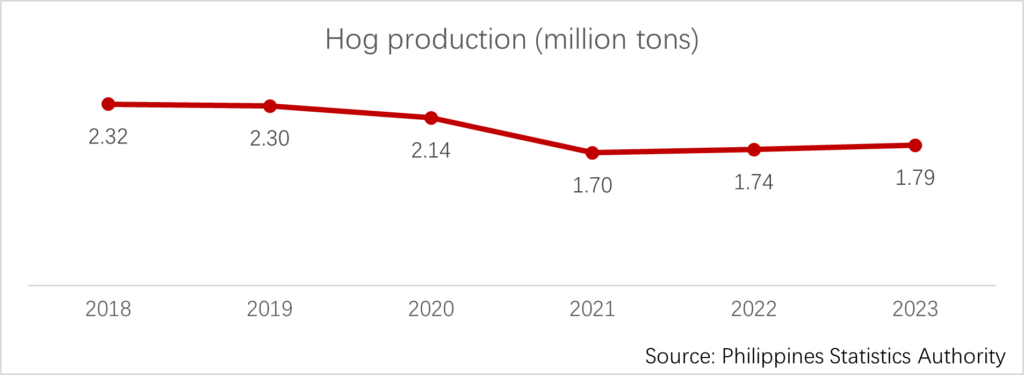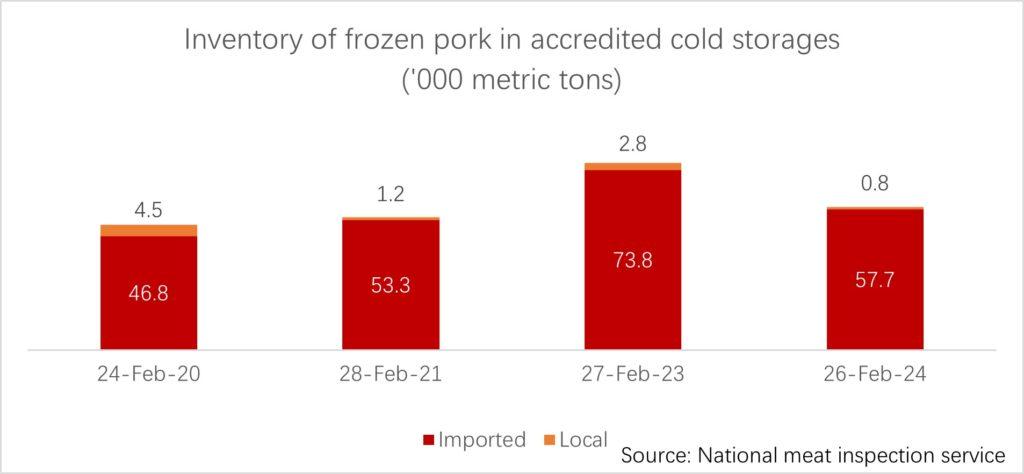The Philippines has extended lower tariffs on key food items, including pork, corn, and rice, until the end of 2024. This decision was made to maintain stable food prices amid challenges such as the El Niño weather phenomenon and African Swine Fever (ASF) affecting domestic pork production [1]. The in-quota duty rate normally is at 30%, and with reduced rates, they are 15% while the out-of-duty quota rate, normally 40%, is currently 25% [2].
The effects of El Niño in 2024 – a climate pattern characterized by the unusual warming of surface waters in the eastern Pacific Ocean- are expected to include challenges for the pork industry due to potential droughts and heat waves caused by this climate phenomenon. This ongoing climate event started in the Philippines in 2023 and is expected to last until the second quarter of 2024 [3].
There are still recent ASF outbreaks reported in various provinces such as Negros Oriental, and Southern Leyte. In Occidental Mindoro province, pig farmers are appealing to government agencies to impose sanctions on pork traders and middlemen spreading disinformation about the severity of the ASF outbreak in the province to drive down prices.
To combat the ASF crisis, the government has been making efforts such as cash assistance distribution to affected farmers, with the Department of Social Welfare and Development and the Philippine Crop Insurance Corporation extending support. In addition, the Integrated National Swine Production Initiatives for Recovery and Expansion (INSPIRE) program is aiding in reviving the pig industry through measures like repopulation, biosecurity enhancement, and financial support. In Antique province, the INSPIRE program has allocated PHP10 million (€165,320) to a Multi-Purpose Cooperative for constructing breeding facilities and acquiring breeding stock [4].
Meanwhile, the Philippines’s inventory of frozen pork on 26th February 2024 was 58,495.66 tons. This is a 23% decline from the same period last year but is still an increase of 7% versus the same period in 2022. The imported portion of the national inventory remains the majority by almost 99% of the total inventory. For the short term, inventory usually decreases during the period of December to April when it starts to pick up again after the high seasons [5].
With the current situation in Philippines, there are local efforts to revive the industry from the ongoing challenges. Yet imports are still considered as the best solution to fulfil the local demand without experiencing high inflation rates.
[1] El Niño expected to last at least until April 2024 – World Meteorological Organization (wmo.int)
[2] ASF Philippines: How traders influence pork prices amid outbreaks – Pig Progress (pigprogress.net)
[3] Weekly inventory of pork and chicken – National meat inspection service (nmis.gov.ph)
[4] Philippines: Reduced Pork and Corn Tariff Rates Extended Through 2024 – USDA (fas.usda.gov)
[5] Philippines extends lower pork tariff rates through 2024 – National hog farmer (nationalhogfarmer.com)






